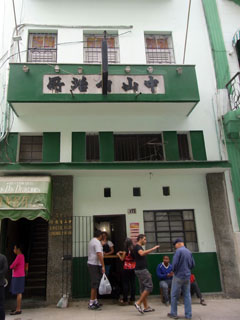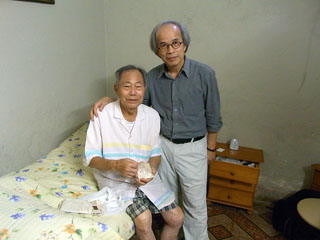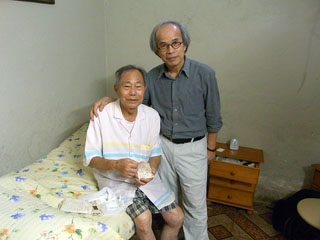- ABOUT IHSSABOUT IHSS
- PEOPLE
- NEWS & EVENTSNEWS & EVENTS
- RESEARCHRESEARCH
- FELLOWSHIPS & GRANTSFELLOWSHIPS & GRANTS
- TEACHING & LEARNINGTEACHING & LEARNING
- PUBLICATIONSPUBLICATIONS

Funded by the Lee Hysan Foundation, Documenting the Oral History of Overseas Chinese in Cuba is a research project aimed at recording and documenting the oral history of overseas Chinese still living in Cuba today.
Most of the Chinese in Cuba had originally hailed from the “four counties” in Guangdong and spoke the Toi-shan or Hoi-ping dialect. At its peak the community numbered to almost 100,000 in the late 1950s, but the Cuban Revolution then put a halt to the arrival of new Chinese migrants. The overseas Chinese in Cuba have lived in relative isolation since and very little attention has been paid to them. However with the tremendous decline in population (only about 150 are still around today) and many approaching their twilight years, there is a need to detail the unique history and memory of the overseas Chinese in Cuba before it is too late.

Funded by the Lee Hysan Foundation, Documenting the Oral History of Overseas Chinese in Cuba is a research project aimed at recording and documenting the oral history of overseas Chinese still living in Cuba today.
Most of the Chinese in Cuba had originally hailed from the “four counties” in Guangdong and spoke the Toi-shan or Hoi-ping dialect. At its peak the community numbered to almost 100,000 in the late 1950s, but the Cuban Revolution then put a halt to the arrival of new Chinese migrants. The overseas Chinese in Cuba have lived in relative isolation since and very little attention has been paid to them. However with the tremendous decline in population (only about 150 are still around today) and many approaching their twilight years, there is a need to detail the unique history and memory of the overseas Chinese in Cuba before it is too late.
Beginning from November 2012, Dr. K.S. Louie embarked on a 20-month project to gather the oral histories of the remaining pre-revolution Chinese immigrants. He had travelled to 6 different cities — Havana, Camaguey, Ciego de Avila, Santa Clara, Trinidad, and Cienfuegos — and conducted more than 30 interviews with first and second-generation Chinese in Cuba. In addition, his work also attracted the attention of Radio-Television Hong Kong (RTHK) and the Hong Kong Museum of History. The former invited Dr. K.S. Louie to join in the filming of a documentary on the overseas Chinese in Cuba, while the latter had been commissioned him to carry out additional research relating to the trade of Chinese coolies to Cuba in the 19th century.


On top of these, Dr. Louie Kin Sheun had produced a 150-page written report (available here), a series of articles and short essays that were published in various print media (e.g. Hong Kong Economic Journal, Apple Daily, the Hong Kong Film Archive newsletter) and had spoken on the history of Chinese in Cuba on several occasions. He has simultaneously built up an archive of interview transcripts, photographs, as well as voice and video recordings. Moving forward, plans are underway to make this valuable repository of information available to students and the scholarly community. A book entitled “遠在古巴” (Oxford University Press (China) Limited) was published as a deliverable. (Details)
Copyright © 2025 Hong Kong Institute for the Humanities and Social Sciences, The University of Hong Kong. All Rights Reserved.